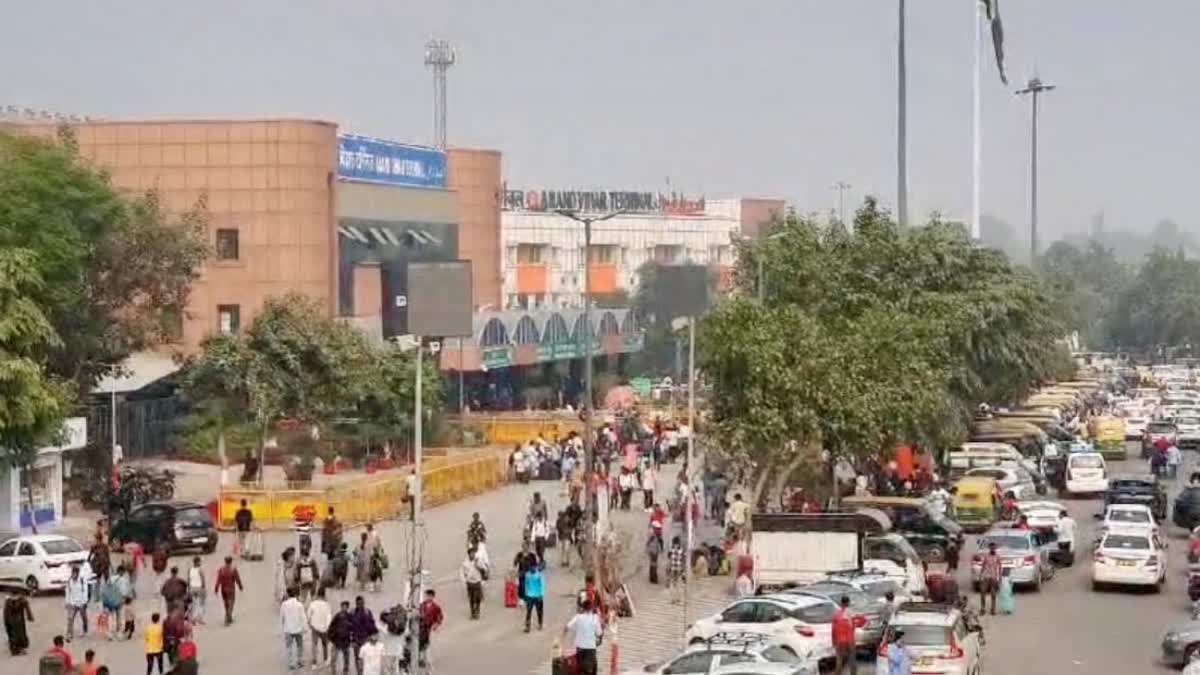New Delhi: Delhi’s air quality has plunged into the ‘very poor’ category, with an alarming Air Quality Index (AQI) reaching 408 on Friday, reflecting severe pollution levels across the capital. For residents, the air is a mix of smog and toxic particles that has become almost unbearable, especially in areas like Anand Vihar where the AQI has reached a staggering 440.
The heavy concentration of pollutants is creating a persistent haze over the city, further diminishing visibility and making daily life more challenging. The effects of this air crisis are evident, particularly in Anand Vihar, which has long struggled with pollution due to high traffic flow around its inter-state bus terminal and railway station.
The air here is thick with smog, obscuring visibility and creating an environment hazardous to public health. Residents have been reporting a rise in respiratory ailments and other health issues as they try to cope with prolonged exposure to these pollutants.
Vishal Gupta, a resident of Anand Vihar, expressed frustration, saying, “Pollution happens every year, but the necessary work to reduce it isn’t happening. We’re trying to stay indoors as much as possible to keep safe.” Many others share this sentiment, feeling that efforts to improve the air quality are insufficient to address the crisis.
Sushil Kumar, a 53-year-old heart patient, pointed to the lack of public awareness as a significant issue: “Pollution will continue because people aren’t aware of the consequences. More awareness is essential. The government’s actions haven’t been enough.” Visitors to the city are also affected, as Anupam Kumar, a tourist from Jharkhand, noted, “After coming to Delhi, the air feels toxic in my nose. It’s as if I’ve entered a gas chamber. The air in Ranchi is much cleaner, and I can’t imagine how people live here.”
Measures to Tackle Pollution: The government has responded with a series of actions intended to bring pollution levels down. Delhi’s Environment Minister Gopal Rai recently announced the deployment of 200 mobile anti-smog guns and increased traffic monitoring to curb pollution from vehicular emissions.
The Commission for Air Quality Management (CAQM) has also moved to enforce Stage III of the Graded Response Action Plan (GRAP) in the National Capital Region (NCR) starting from 8 a.m. on November 15.
Under Stage III of GRAP, stringent regulations are in place to control pollution sources. These include halting all construction and demolition activities, intensifying inspections of polluting vehicles, and banning non-essential industries that rely on coal and biomass. Additionally, the Delhi Pollution Control Committee (DPCC) has deployed more air quality monitoring teams to ensure compliance with these measures. Industries that fail to follow pollution control standards will face strict penalties.
The 11-point action plan introduced under GRAP Stage III is part of an emergency response to protect residents from harmful air pollutants. Experts predict that air quality will continue to worsen as winter progresses, with increased heating demands and seasonal factors further aggravating pollution levels. The action plan outlines preventive measures that are triggered based on the severity of pollution and aims to safeguard public health during these hazardous conditions.
Schools Move to Online Classes: Amidst these challenges, Delhi’s Chief Minister Atishi has ordered all primary schools to conduct online classes until further notice. She announced this decision on social media, explaining that “the level of pollution is increasing in Delhi, and all schools up to Class V will remain closed for in-person learning.” This measure is designed to protect young children from the adverse health effects of prolonged exposure to toxic air.
The impact of severe air pollution on children has been a major concern. Health experts warn that long-term exposure to such high pollution levels can lead to serious respiratory problems, weakened immunity, and other chronic health issues in children. By keeping students indoors, the government aims to minimize their exposure and prevent health complications.
A Growing Health Crisis: The current air quality situation in Delhi has raised alarms among health experts, who warn of the risks of prolonged exposure to these dangerous pollution levels. Continuous exposure to pollutants like PM2.5 and PM10 can lead to respiratory infections, chronic bronchitis, asthma, and cardiovascular issues. For the elderly, children, and individuals with pre-existing health conditions, the health consequences are even more severe.
As Delhi continues to grapple with its air pollution crisis, the focus is now on enforcement and compliance. The measures under GRAP Stage III reflect the urgent need to bring pollution under control before it reaches even more critical levels. However, for residents like Vishal Gupta and Sushil Kumar, the hope is that these efforts lead to lasting changes and that the capital’s air becomes safer to breathe.
In the meantime, Delhiites are left to navigate the hazards of daily life amidst severe pollution, relying on masks, air purifiers, and self-imposed indoor isolation to safeguard their health. The ongoing pollution crisis highlights an urgent call for action at multiple levels, from policy reforms to individual responsibility, to bring about the clean air the capital’s residents deserve.
Read More:



